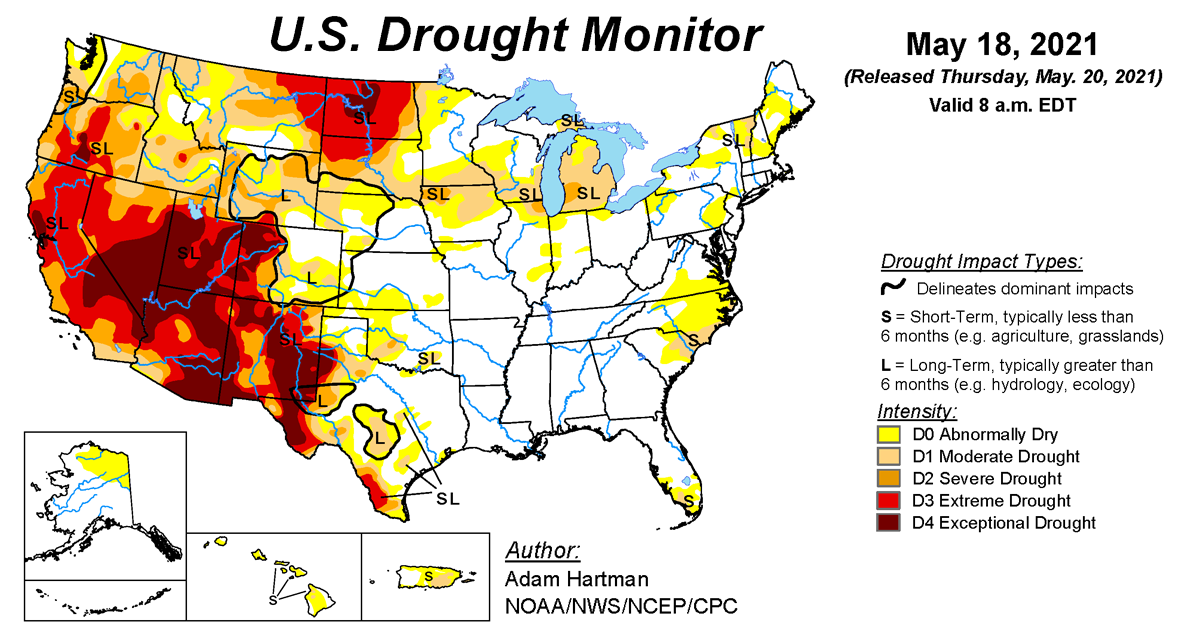
According to the May 18, 2021, U.S. Drought Monitor, moderate to exceptional drought covers 37.0% of the United States including Puerto Rico, a decrease from last week’s 38.6%. The worst drought categories (extreme to exceptional drought) decreased from 18.8% last week to 18.3%.
The atmospheric circulation across the contiguous United States shifted, transitioning from an upper-level ridge in the West and trough in the East at the beginning of the week to a ridge across much of the country with a trough moving into the West at the end of the week. When averaged across the week, the circulation pattern had the ridge dominating in the West with warmer-than-normal temperatures and the trough dominating in the East with cooler-than-normal temperatures. Pacific weather systems, with their surface fronts and lows, weakened and dried out as they moved through the western ridge. They tapped Gulf of Mexico moisture as they reached the Plains. However, most of the precipitation was limited to the southern and central Plains, along the Gulf Coast, in a strip bisecting the Mid-Mississippi Valley, and parts of Nevada.
The rest of the contiguous United States was drier than normal. Abundant rain fell across several drought areas, so drought or abnormal dryness contracted across much of the southern to central Great Plains. But drought or abnormal dryness expanded or intensified across parts of the West, northern Plains, Great Lakes, and Mid-Atlantic States. Contraction exceeded expansion, so the moderate to exceptional drought area shrank this week.

The full U.S. Drought Monitor weekly update is available from Drought.gov.
The most recent U.S. Drought Outlook is available from NOAA’s Climate Prediction Center and the U.S. Department of Agriculture provides information about the drought’s influence on crops and livestock.
For additional drought information, follow #DroughtMonitor on Facebook and Twitter.



